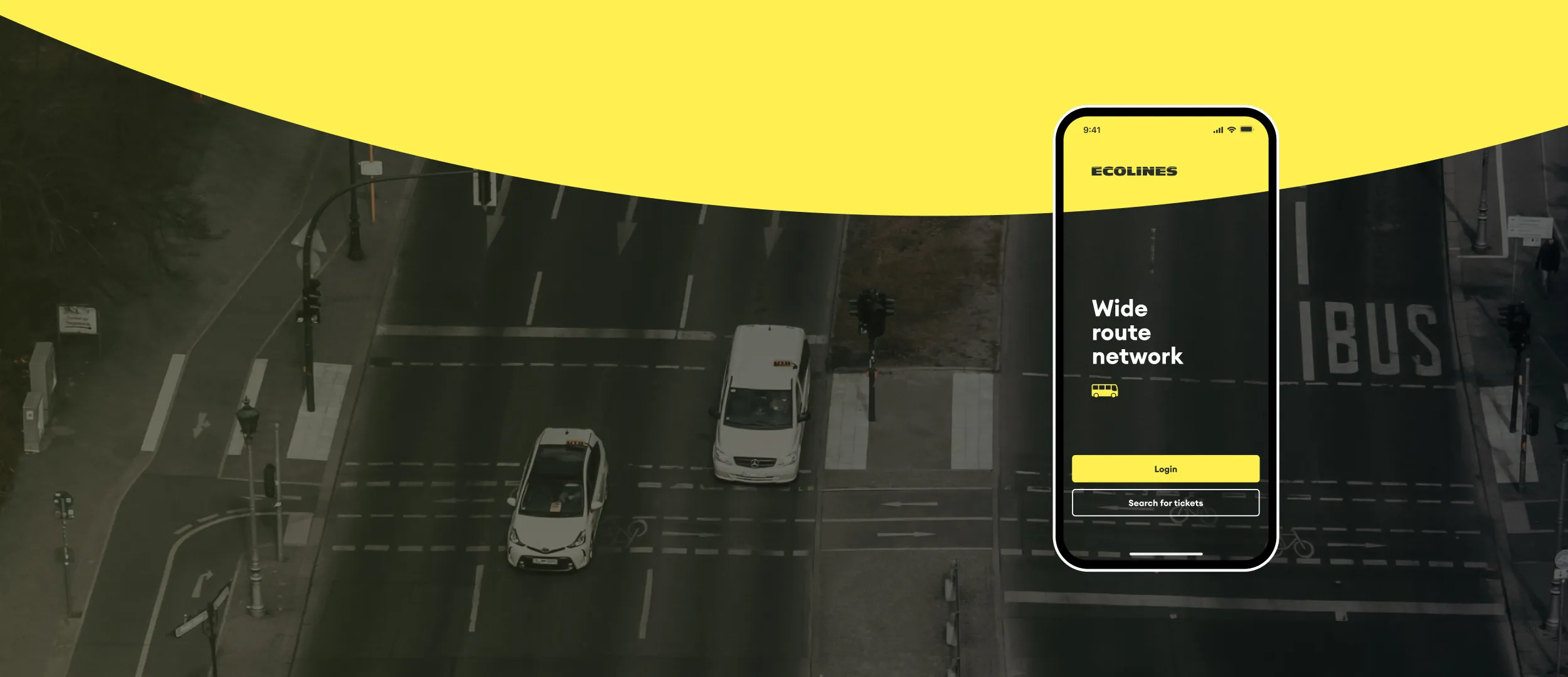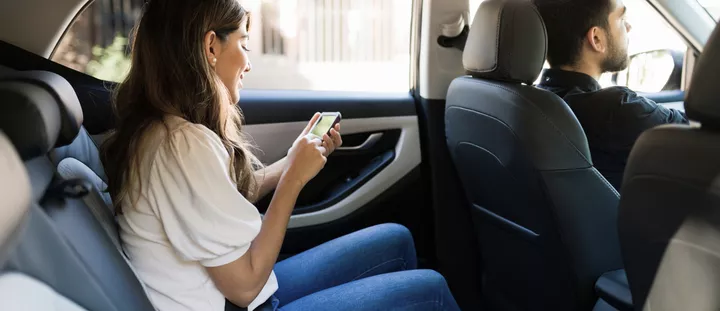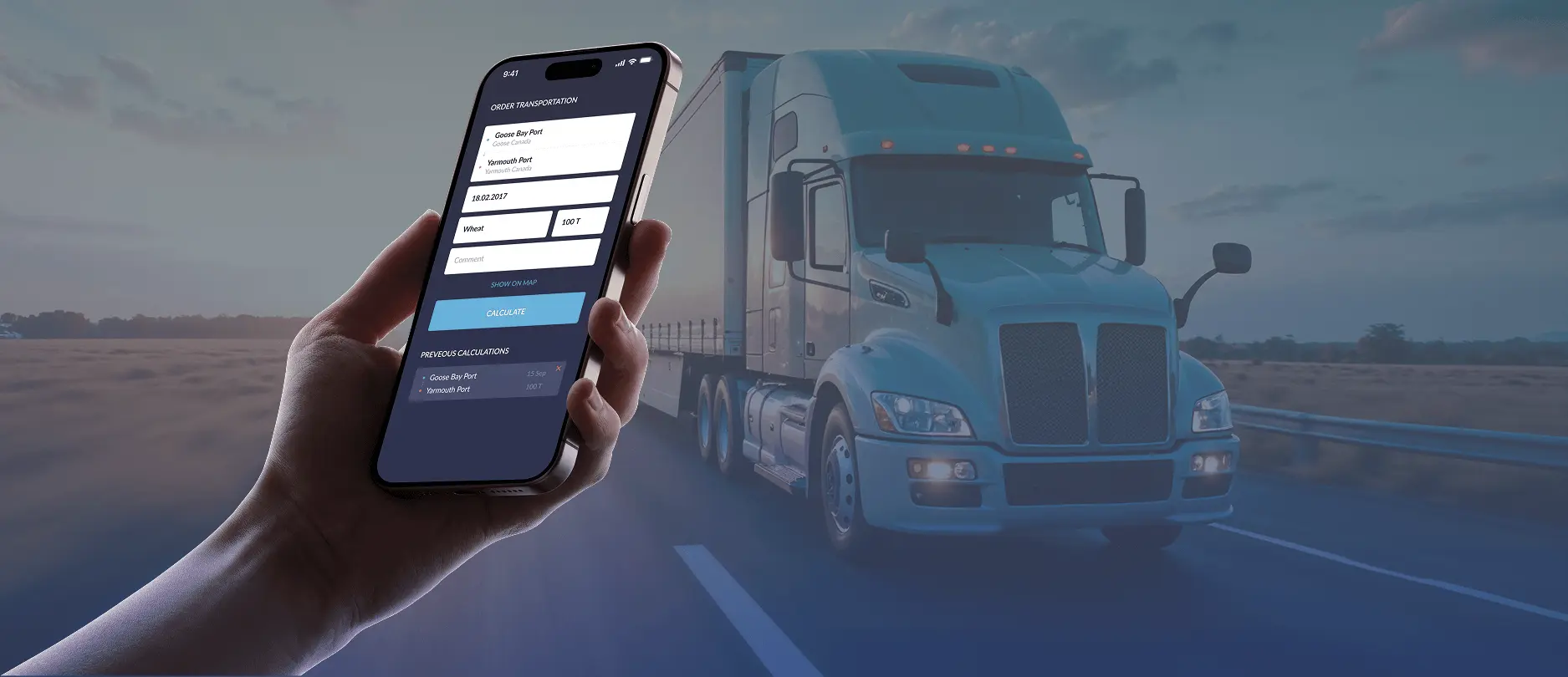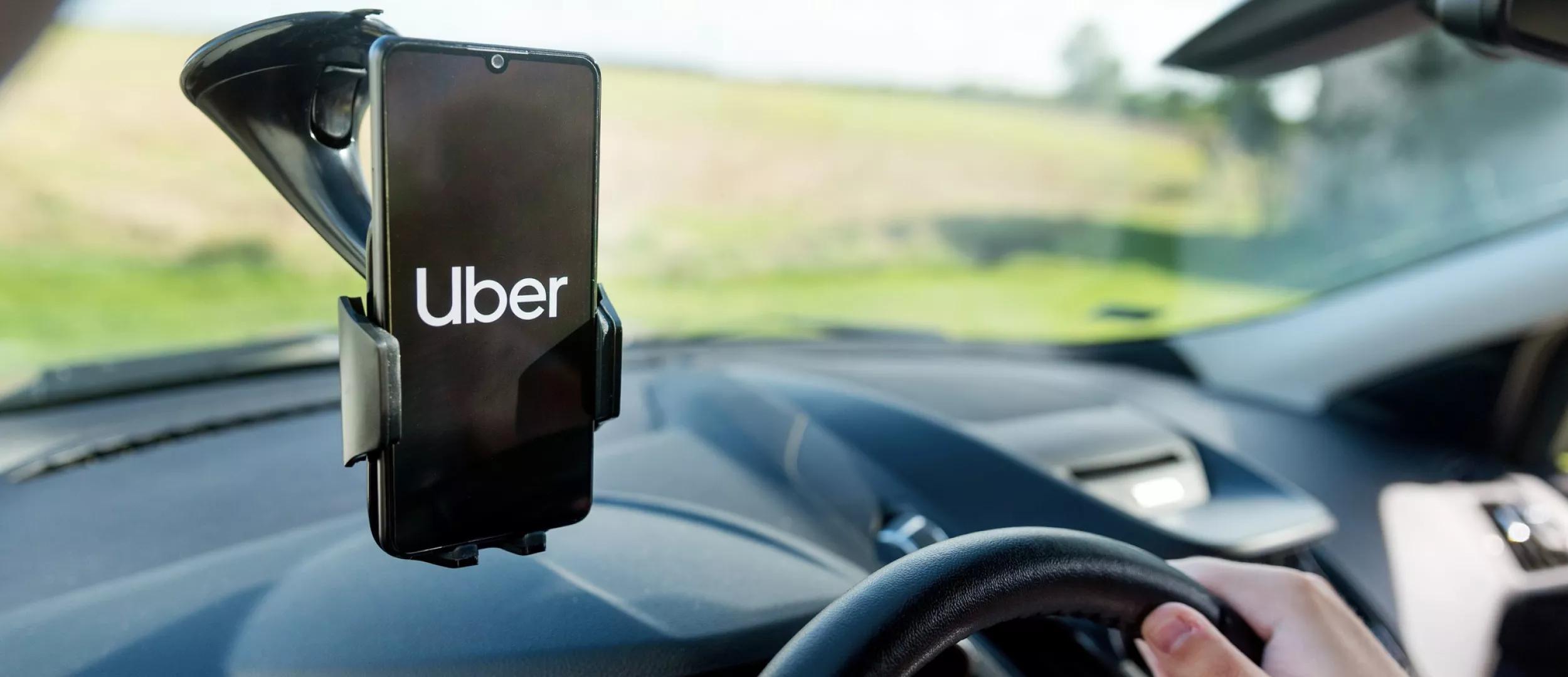
The transportation market changed dramatically with the rise of Uber. Today, Uber-like apps confidently hold their place worldwide and generate billions in annual revenue.
If you're planning to launch a new ride-hailing service or upgrade an existing one, choosing to create an app like Uber can significantly enhance your business.
An Uber-like app solution enables people to request a ride, get instantly matched with a nearby driver, track the vehicle in real time, and pay effortlessly through secure in-app payments. This type of platform helps businesses optimize operations, improve service quality, and stay competitive in a fast-growing industry.
What Uber & Lyft Clone App Development Really Means
Uber-like app development is an awesome alternative if you’re looking for a user-friendly solution that is efficient with basic and advanced features. You can analyze apps like Uber to identify the ideal fit for businesses in a demanding market.
Uber and Lyft are booking apps that are designed for ride requests and are made up of two apps in one. The first app is for passengers, the second is for drivers. Also, in Uber, supervisors, can link with an admin panel, and may use an interface to resolve issues and communicate with riders and drivers.
It is important to learn the basic components of the system to build a booking app resembling Uber or Lyft. Building an app like Uber as a landing page is an awesome idea. This will help collect potential users and drive inquiries to join the network.
Want an Uber-like app that does more?
Let’s build a solution that’s smart, scalable, and ready for real growth.
Alina
Client Manager

Key Features of a Lyft Clone Passenger App
- Registration and profile editing
- Booking
- Tracking
- Price calculator
- Payments
- Contact and feedback
- Push Notifications
- Personal Profile
- Additional features
- Booking in advanced features
- Share costs
- Rent a scooter, order meals, and more
- Request the favorite driver
- Waitlist
Core Features of the Uber Driver App
- Registration and profile editing
- Bookings
- Push notifications
- Navigation
- Estimated costs
- Earnings tab
- Messaging and calls
- Riders ranking
- Driver support
- Additional features
- Music
- Reward points
Admin Panel for Lyft Clone Apps
The good set of functions in the admin platform for Uber-like apps includes:
- Locations and Fares Management
- Booking Management
- Driver and User Management
- Car Management
- Check Ratings and Reviews
- Review Orders and Payoffs
- Notifications Management
- Discounts Management
- Support
- System Content Management & FAQ
- Integration with Google Analytics
Step-by-Step Guide to Developing a Lyft Clone App
Step 1. Define a Unique Value Proposition for Your Uber-Like App
To create a strong brand and make your booking app distinctive from competitors, you need to have a unique value proposition. Another feature of a value proposition is to develop your Uber clone app to be attractive to users. Your value proposition depends on what your competitors offer.
Uber
Uber is the most prominent player in the Uber-style market. The Uber app is available in 67 countries and 78 cities, with 55 million active monthly users.
Two value propositions of Uber:
- Convenient and Fast Riding
- Affordable Pricing
The first value proposition emphasizes the comfort of using the app, and the second is Uber has reasonable pricing that makes services available to anyone. Uber was the first service to offer distance-based pricing. If you're looking to create a taxi app like Uber, we can help you develop Uber-like software with the same features and user-friendly experience.
Lyft
Lyft is the second-largest booking app. Lyft provides services only in the USA (65 cities across 30 states). Two value propositions of Lyft:
- Ride in minutes
- Take a wheel
The first one is for passengers who need a taxi in a short time, and the second proposition value is for drivers who would like to join Lyft’s fleet to earn.
To build a strong brand, don’t copy other Uber-style apps. Instead, identify ideas that will make your service app stand out, articulate them, and create a unique value proposition. With an easy Uber-like clone, you can quickly develop a taxi booking app similar to popular services like Uber or Lyft. However, it's important to enhance and customize it to reflect your unique features and brand, setting your app apart from the competition.
Stfalcon has significant experience in developing transportation apps like Uber. For example, BBGO - is a car order service. The value propositions - are "Baby seat", "Transportation of animals" and "Courier" options.
We also developed Anycar, a car-sharing platform for a fleet management company with over 200 vehicles. The result is a convenient and secure P2P app for renters and car owners with real-time tracking, insurance, and seamless payments.
Step 2. Identify Your Market Niche and Target Users
You can think that there is only one niche in the market. But this is not correct. For example, you can choose a niche of electric car taxis. Today, people are concerned about environmental issues. So, they choose environmentally-friendly transport.
Alternative vehicles, such as motorbikes are another option. It faces limited competition because it offers an on-demand bike taxi service and is quite unusual.
- GrabBike, provides on-demand bike services across Thailand and has 5,997,330 reviews on Google Play. GrabBike also provides for users to send packages with bike drivers.
- Rapido service is available in 40 cities across India with more than 2 million app users and more than 10 million rides.
- LimeBike is a motorbike riding service provider in London that provides clients with the fastest and safe route to and from the airport.
You can find on-demand bike taxis in Brazil, Pakistan, China, and the USA. But not many have an app to take a bike. So, if you are from the country mentioned above, you can launch the first bike app and make it prominent.
Step 3. Select the Right Revenue Model for an Uber-Like Platform
Businesses like Uber have the potential to earn revenue in various ways.
The best transport mode is taxis that support the transportation of people from one location to another. You can expand this mode for a large number of people’s motions. It can be between the two cities or two locations within a city. Sharing the ride experience with someone will boost the revenue.
The car booking platform has various services. The one who is looking for a convenient way of transportation will pick a simple taxi; on the other hand, those who want a luxury ride will choose a macro cab. That’s why you can offer the same services across different people and domains, helping you increase revenue.
In this model, the price is not fixed. It changes by demand, traffic, and supply.
The price varies per mile depending on the number of drivers available and the requests from passengers who are looking for a ride. If you want to know how to start a business like Uber, these revenue models can help ensure that your business remains flexible and profitable.
Step 4. Create Technical Documentation to Build an App Like Uber
The requirements for the business model, app features, and platforms are documented in this step.
Documentation helps build a blueprint and a reference, anytime you encounter issues during the Lyft clone app development process. It helps guide the project, particularly when working on taxi app development, such as Uber, ensuring a clear roadmap for both developers and stakeholders. Defining the scope, timeline, and milestones at this stage is very useful. Our Uber-like taxi app development company develops technical documentation during the Discovery phase. The Discovery phase helps developers to define what your project should and shouldn't be.
Step 5. Develop the MVP of Your Uber-Like App
Riding apps like Uber at its core should allow users to book rides and make cashless payments. The whole system should provide real-time interactions between the server and the application and process payments automatically after the trip is completed.
Other than that, an economically viable product must have a refund and driver evaluation.
Let's take a look at the important features of MVP and how to create them:
- The first feature is real-time tracking and alerts. Its creation requires code optimization to improve network performance, socket programming, and communication with various Google Maps APIs.
- The application should allow users to register from a smartphone. User account details should be stored in a separate database with proper security settings.
- To hail a taxi, the app uses Google Maps to allow the user to select a location on the map. When the user confirms the request, an alert is sent to the nearest driver. Distance and expected time of arrival can be easily retrieved using the Google Map API.
- When booking a trip, you need to send a push notification. GCM is free, native for mobile platforms, and stable, easy to integrate. At Stfalcon, we use it when working with mobile applications, because it works well in the context of the application life cycle.
- Sending notifications also requires an SSL connection, which can be the hardest part.
- We directly integrate the payment system, which is selected from the region of the target users.
To bill a trip, the app can use motion tracking.
In short, your first MVP product should allow users to request a service (a trip), send push notifications, process real-time payments, and use the Google Maps API to determine locations. All this needs to be done on a scalable and reliable backend.
How Much Does It Cost to Build an App Like Uber or Develop a Lyft Clone App?
Mobile app development is a niche that is difficult to assess. The Uber-like taxi app development cost includes specifications, graphical mockups, an application prototype, implementation of all components, internal and acceptance testing, and application implementation support. Building an app comparable to Uber could easily exceed the total cost of $80,000 depending on the hourly rate (average price estimate).
Cost Determining Factors For Uber-like Apps
The general timeline for developing Uber-like apps by developers at Stfalcon.
Creating the taxi app from analyzing requirements to publishing applications in the markets takes 1000-1500 hours (backed, mobile, design, testing, PM). The cost of developing a Lyft clone app depends on complexity, solution stack, integrated third-party services, and other technical factors. To create an MVP, on average, a mobile dev spends 300 hours on an app.
This section addresses some of the most common questions people have when they plan to create uber like app.
FAQs About Developing Uber-Like App Solutions
What capabilities are available for dispatch and fleet management?
Modern software like Uber and Lyft clone apps offer powerful dispatch and fleet management features. These include: real-time GPS tracking of vehicles; automated ride assignment based on proximity and availability; driver performance monitoring; tools for managing vehicle maintenance schedules. Advanced analytics provide insights into demand patterns. It allows you to adapt your fleet size and positioning.
What are the advantages of using such software over traditional Uber-like services?
Adopting a Lyft clone app offers several advantages over traditional Uber-like services. First, it provides a user-friendly experience for customers. They enjoy the convenience of booking rides through their smartphones. Free versions of taxi software like Uber provide users with transparent pricing and estimated arrival times. It offers better transparency with upfront pricing and the ability to rate drivers and rides. Drivers benefit from automated dispatch and cashless payments. As a business, you can optimize routes, reduce wait times, and improve service quality. Moreover, it opens up new revenue streams and business models, such as ride-sharing and on-demand services. By building an app like Uber, you can compete effectively in today's market and attract a broader customer base.
How are support and software updates handled?
Reliable support and regular software updates are crucial when you build an app like Uber. Reputable providers of a Lyft clone app solutions offer ongoing technical support. They have dedicated customer support channels. These include email, phone, or live chat to address user issues or inquiries. It ensures smooth operations and quick resolution of any issues. They also deliver periodic updates to their software to fix bugs, enhance security, and introduce new features. These updates keep your app running optimally and help you stay competitive.
How Stfalcon Helps Companies Develop Uber-Like Apps and Lyft Clone Solutions
How Stfalcon Helps Companies Develop Uber-Like Apps and Lyft Clone Solutions At Stfalcon, we have extensive experience in developing solutions for the transport industry, particularly taxis. We specialize in developing Android and iOS apps and would be happy to build an Uber-like taxi app for you. Please, check out our portfolio (including Lyft clone app development cases and more), and contact us to discuss your idea!
Final Thoughts on Developing an Uber-Like App
The simpler and more transparent the application interface, the more orders and the faster the service is provided. The passenger should quickly and easily find how to order a car on any screen. To create an app like Uber that is convenient and retains its audience, it is necessary to follow the design requirements of both Android and iOS. If you're wondering how to build an app like Uber, it's essential to prioritize user experience and seamless functionality. An Uber-like mobile application is a complex client-server program, and we can help you bring your idea to life. A free consultation is available.

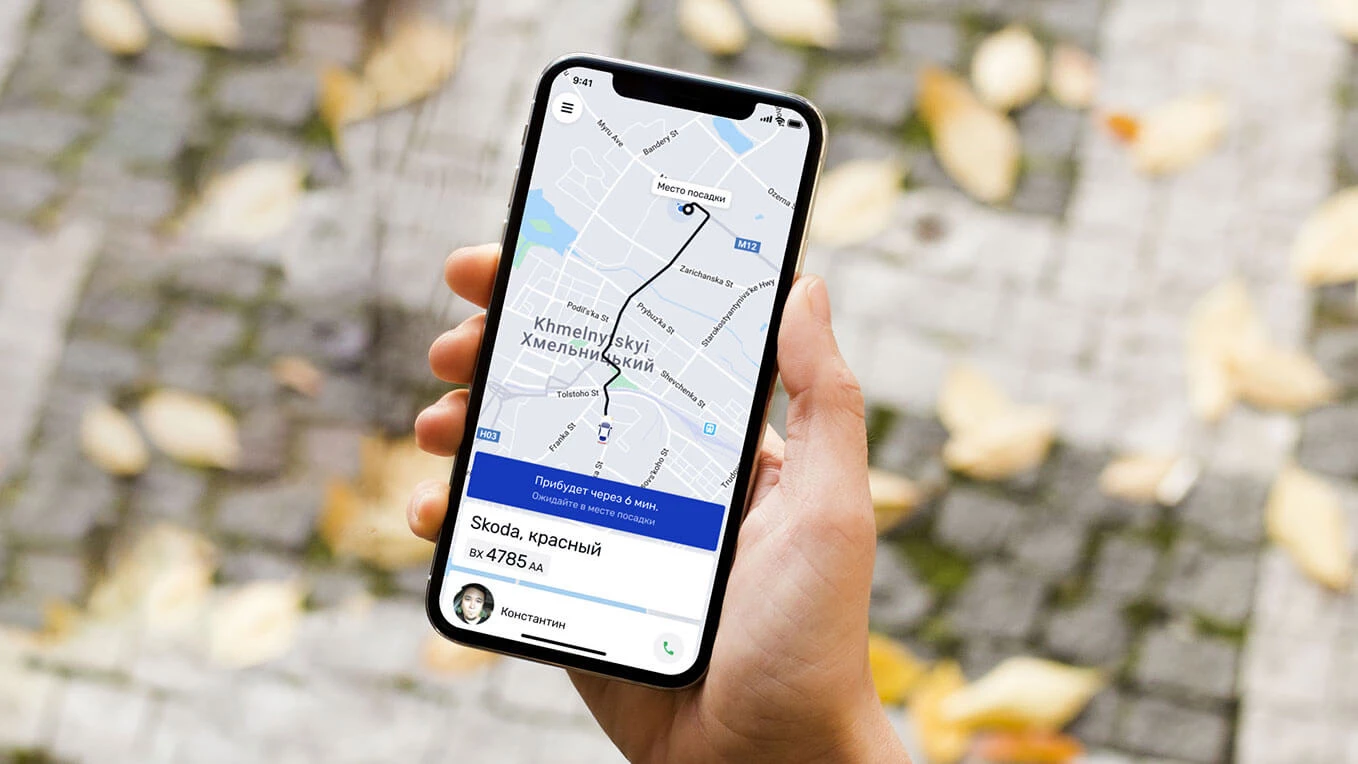 Read the full case study
Read the full case study
 Read the full case study
Read the full case study
